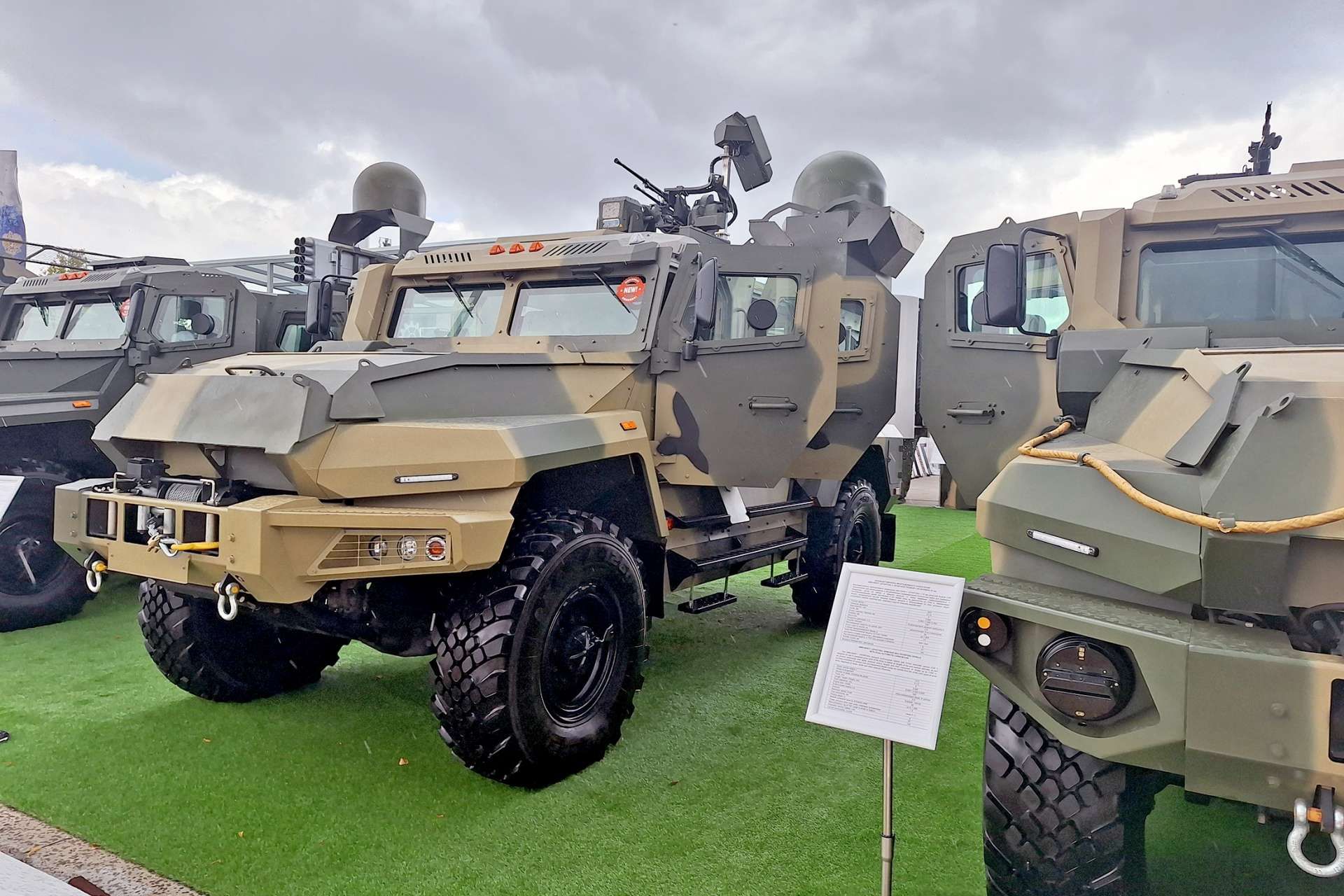Breaking News
Russian engineers unveil Rapira-3 air defense system armed with ten S-8 rockets to counter Ukrainian drones.
At the International Military-Technical Forum "Army-2024," the "Rapira-3" system was introduced, mounted on the AMN-590951 Spartak MRAP (Mine-Resistant Ambush Protected) vehicle, as a new asset for countering unmanned aerial vehicles (UAVs). The "Rapira-3" is equipped with ten S-8 rockets, originally air-launched, now repurposed for a ground-to-air role. This development is part of a broader effort by Russian engineers to improve capabilities in countering drones, including kamikaze drones, reflecting the growing significance of UAVs in Ukraine.
Follow Army Recognition on Google News at this link

The "Rapira-3" system was presented alongside the "Rapira-2," both multifunctional systems designed for detecting and engaging small airborne targets. (Picture source: RG)
The "Rapira-3" system was presented alongside the "Rapira-2," both multifunctional systems designed for detecting and engaging small airborne targets. These systems are mounted on two-axle Spartak armored vehicles, enhancing their mobility and operational flexibility. The "Rapira-2" is equipped with PKT 7.62 mm machine guns, while the "Rapira-3" is armed with ten 80 mm S-8 air-launched rockets, aimed at engaging various UAVs.
The S-8 rocket, developed by the Soviet Air Force in the 1970s, has a history of use in ground-attack roles from helicopters and aircraft such as the Mi-8, Mi-24, Mi-28N, Ka-52, Su-24, Su-25, and Su-34. The S-8 comes in various subtypes with different warheads, including high-explosive fragmentation, smoke, and fuel-air explosive variants. These rockets are typically carried in pods holding either seven or twenty rockets.

Ten S-8 rockets, with a range of 2 to 4 kilometers depending on the warhead and operational context, have been integrated into the "Rapira-3" system to intercept UAVs at various ranges. (Picture source: RG)
The "Rapira-3" system represents a modification of the S-8 rocket for ground-to-air use, diverging from its traditional air-to-ground applications. This adaptation responds to emerging threats posed by UAVs in Ukraine, where existing weapons are being repurposed for new roles.
An earlier version of this system, mounted on an armored "Tiger" vehicle, was showcased at a previous "Army" forum. This version included an onboard radar station with an active phased array, capable of detecting aerial targets at distances of up to 20,000 meters. It was armed with four 7.62 mm machine guns with an ammunition capacity of 4,000 rounds.
The S-8 rocket, with a range of 2 to 4 kilometers depending on the warhead and operational context, has been integrated into the "Rapira-3" system to intercept UAVs at various ranges. The S-8OFP variant, which entered service in 2023, offers enhancements in range, warhead weight, and digital fuse capabilities, potentially increasing its effectiveness against UAVs.

The "Rapira-3" system represents a modification of the S-8 rocket for ground-to-air use, diverging from its traditional air-to-ground applications. (Picture source: RG)

The "Rapira-2" is equipped with PKT 7.62 mm machine guns, while the "Rapira-3" is armed with ten 80 mm S-8 air-launched rockets, aimed at engaging various UAVs. (Picture source: RG)


























